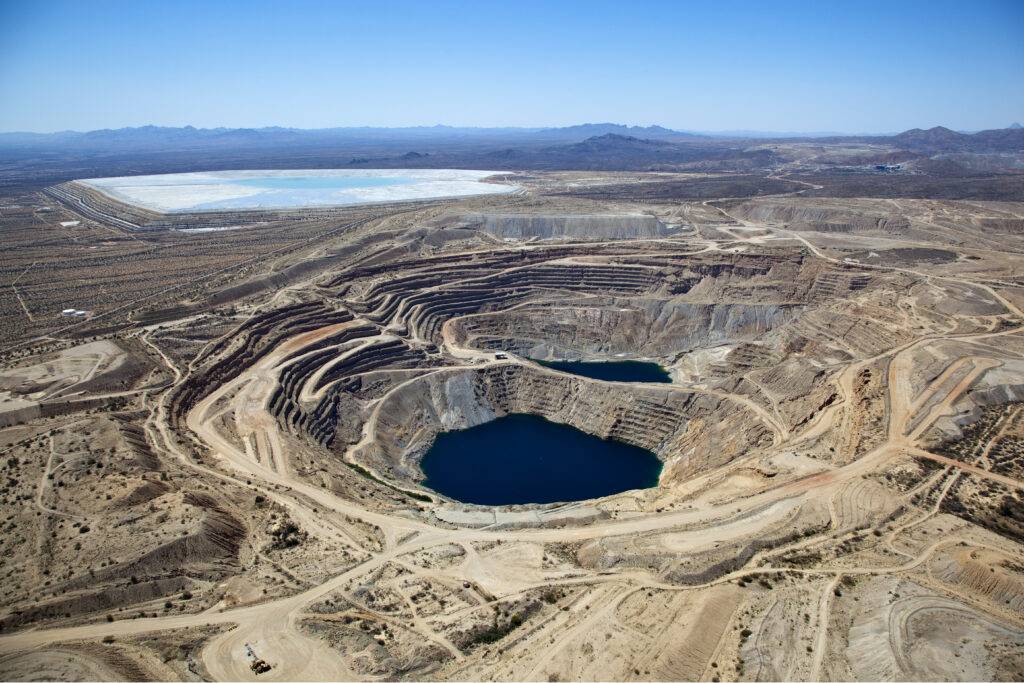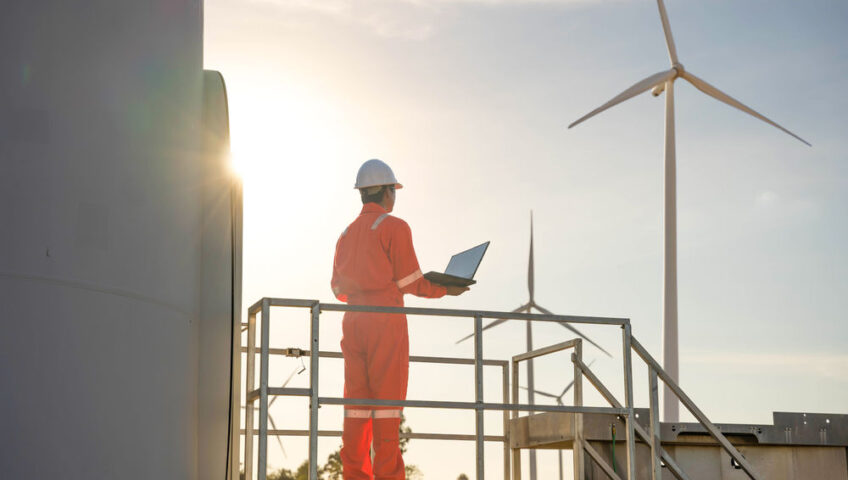Sustainability Trends in the Mining Industry – is ‘Green’ Mining Possible?
Mining and sustainability are two words that have traditionally been viewed as incompatible. However, as the issues of environmental stewardship, carbon emissions and social responsibility gain widespread attention, mining companies are positioning themselves to make sustainability a core aspect of their business.
The mining industry contributes as much as 10% of the total global greenhouse gas (GHG) emissions, therefore our industry has a key role to play – not only in the reduction of carbon but also in improving environmental practices across the board.
With decreasing ore grades and escalating demand for resources, the challenge to achieve sustainable mining practices has arguably never been so great.
In this month’s blog, we take a look at what is currently being done around the world to make mining greener.
Is ‘Green’ Mining Possible?
Mining is not only planning to go green, in some places, it already has achieved substantial progress in the mission to reduce environmental impact.
In Sweden, LKAB (Europe’s largest iron ore miner) has successfully produced the world’s first carbon-free iron ore pellets. Elsewhere, Newmont Corporation has committed to investing some $ 500 million into climate change initiatives, over the next 5 years, to target a 30 % reduction in GHG emissions by 2030 and becoming net-zero carbon by 2050.
A record fifteen Mining and Metals companies have now made it into S&P Global’s Sustainability Yearbook for 2021 – a benchmark used to rank all corporate companies on their sustainability practices globally.
A little closer to home, companies that support the mining industry can also do their bit. Here at MTS, we are also working towards more sustainable business practices. For details on this, check out our blog here.
Mining companies understand that sustainable mining can also have a positive effect on operational efficiency. Advancements in tailings management, water use reduction and dust suppression can boost the case for their license to operate, and also improve their bottom line.
Moving Towards a More Sustainable Mining Industry
How can all of this all be achieved? There are several ways mining companies are targeting a move towards sustainable mining.
Previously, environmentally friendly mining may have traditionally focused on post-mining activities (such as ground rehabilitation). Now, new trends in the mining industry are seeing efforts to drive sustainability at every stage in the mining life cycle.
Exploration and Development Stage
- Actively quantifying the magnitude of environmental impact by determining an accurate picture of biodiversity through modern environmental surveys.
- The application of modern geophysical exploration and remote sensing techniques that avoid the need for ‘line of sight’ cuttings that can harm biodiversity.
- The careful planning of exploration drill pads to minimise the need for access roads.
- Consideration of environmental impacts of cutoff grade in pre-feasibility studies.
Operation Stage
- Renewable sources of power generation to avoid CO₂ emissions and to provide a cheap reliable cost per kW.
- Modern diesel-electric drive fleets or battery electric (where possible) to reduce diesel consumption and reduce refueling downtime.
- Strict monitoring and benchmarking of emission levels across all aspects of the operation
- Improved mining and recovery practices to reduce waste and wastewater, whilst lowering cost per tonne.
- Efficient dust suppression procedures to avoid dust plumes and extend asset life.
Mine Closure and Rehabilitation Stage
A comprehensive rehabilitation strategy can really add value to the local environment, which may also improve the company’s Social Licence to Operate (SLO). Such as:
- Waste reduction and tailings reprocessing to extract additional value from waste material whilst reducing man-made geomorphic impact.
- Consider secondary uses for old mine works. Coal mines may not seem the obvious solution to a low carbon future but both above and below ground, old workings are being repurposed to create green energy. The large infrastructure already in place at many mines makes them ideal candidates for energy generation.

In the UK, plans are underway to use the large geothermal gradient found in UK deep coal mines for thermal energy generation.
Whilst in Australia, studies are being conducted into the viability of turning old surface coal operations into green energy hubs, by converting them into pumped hydro facilities.
Another, more novel approach, is harnessing the mining industry’s extensive experience with hoists and winches to turn old shafts into simple gravity-based energy storage solutions.
Mining Technology Furthering Green Mining Initiatives?
Technology has a large part to play in the shift towards sustainable mining, some of the key technological innovations and trends driving the change include the move towards electrification and in-situ mining.
Electrification of Loading & Hauling
One of the biggest contributors to carbon emissions at any mining operation is the diesel engine – usually around 15% of a mine’s total emissions. At surface operations, this has resulted in a resurgence of the trolley assist system – a technology that has been around for decades.
The need to reduce carbon emissions and the availability of renewable energy sources bringing the cost per kW of electricity down (a once often deciding factor against the system), has resulted in the technology being considered by several mining companies, including Boliden and Ferrexpo.
This has the added benefit of increased haul speeds on the ramps which in turn can drive productivity increases. Anglo American has taken this one step further, as they are set to trial a 290 tonne, fully electric, hydrogen fuel cell truck later this year.
Meanwhile underground, advances in battery technology have enabled fully electric vehicles. This not only has the obvious benefit of massively lowering emissions but also means cleaner air for workers to breathe.
Trolley assist systems and battery vehicles, of course, require a source of electricity. Indeed, increasing electricity demand within the mining sector saw the top 10 mining companies alone use more electricity than Vietnam in 2019 – a country with 95 million people!
Fortunately, another sustainability trend within the industry is the uptake of renewable energy. A good example of this is in Chile, where 18% of mines are currently using renewable energy with a target of 70% by 2050.
In-Situ Mining
One of the key components of a low carbon society is electric vehicles. However, it is crucial to remember that the batteries within these vehicles will require large amounts of lithium and other metals, such as cobalt and nickel.
Analysts are predicting global lithium output will have to increase by five times as much as current production, to meet global climate targets by 2050 – consequently, the mining of lithium is likely to play a key role in the world’s sustainable future.
Fortunately, demand for metals is also driving new mining methods, with several companies focusing on more environmentally friendly mining techniques such as in-situ mining. These techniques have the advantage of reducing the surface footprint of the mining operation, which in turn results in reduced effect on the surrounding environment. In the UK, Cornish Lithium and in Germany, Vulcan Energy Resources are both on a mission to produce carbon-neutral lithium through these revolutionary green mining techniques.
The Push for Greener KPIs
Green mining initiatives don’t have to involve large CAPEX costs – they can evolve from better use of what the mine already has.
Instead of focusing on traditional metrics like Utilisation or Tonnes per Shift (that can sometimes encourage inefficient behaviour) use the data generated from mine control system to measure a different set of KPIs that measure fuel burn, fuel consumed or carbon emitted.
An example could be to measure Idle Time, CO₂ per Tonne or Tonnes per Operating Hour. These could be used in dashboard visualisations to trend and highlight how the operation is working towards sustainability goals.
Additionally, using data available to measure KPIs linked to improved blasting performance and shovel operator loading accuracy, can have a significant impact to ensure sustainable mining practices. Up to 50% of the energy a mining operation consumes is associated with grinding rock. Therefore, if the rock being sent to be crushed is a.) the correct material and b.) the correct sized material, it ensures that this energy is consumed as efficiently as possible.
Rethinking Tailings Management
An inevitable product of mining is tailings, with gold mining often amongst some of the largest producers of tailings.
Tailings management facilities and the resulting tailing dams can be some of the largest man-made structures in the world – incurring great capital costs to the operation. After several large scale failings gaining global news coverage recently, they are arguably the greatest challenge mining companies face in winning public opinion.

One method being deployed is to treat tailings as a construction resource. Recycling tailings for use as paste backfill or other construction activities not only gives value to otherwise ‘waste’ product, it also reduces the use, or (in cases of reprocessing) produces a source of water – a rare commodity at some operations and something that can have a huge positive environmental impact.
Furthermore, technological advances in tailing management facilities have the potential for the development of tailings disposal methods with a positive gain for the environment. Processes of accelerating carbonation of mining waste which can achieve the same effect as 30 years of passive carbonation in 4 weeks are being trialled.
This not only significantly increases carbon capture rate (with the potential to capture 175 million tonnes of atmospheric CO₂ per year), the method can also be used in the recovery of base metal from tailings, offering an additional source of materials to fuel the battery revolution, without having to develop a new mine.
That’s all for this month’s blog. We really enjoyed researching and creating this content!
Do you think green mining is possible? Do you have any other solutions? Let us know.

